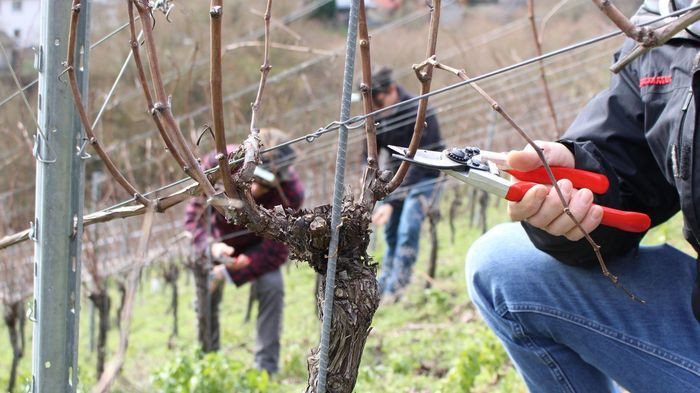How AI is revolutionising pruning in viticulture

An AI application for precise pruning techniques developed at the German RPTU Kaiserslautern under the project management of Stephan Krauß from DFKI heralds a new era in viticulture.
To achieve this, Stephan Krauß and his team of scientists at DFKI and RPTU Kaiserslautern have developed an AI technology that is designed to assist with a particularly demanding process during viticulture: optimal pruning. The technological solution is based on several steps.
Firstly, images of vines are captured and the components of the plant are identified using AI algorithms. Once the individual components have been identified, the vines are reconstructed in 3D. The captured images are used to create an accurate three-dimensional model of the vines. This model makes it possible to precisely describe and analyse the spatial structure of the vines.
Recommendations
Based on this data, clear recommendations for so-called ‘gentle pruning’ are defined, i.e. where the plant can and should be pruned. The AI takes into account various factors such as the condition of the vines, their age and the corresponding growth patterns. By applying these rules, the winegrower is then precisely guided through each pruning process in order to prune the plant as gently as possible and ensure the long-term health of the vine.
A key aspect of AI in viticulture is the continuous manual improvement and adaptation of the algorithms. By analysing feedback data from real pruning processes, the algorithms can be continuously optimised to further increase the efficiency and quality of pruning. The system does not optimise itself, but all adjustments are made manually by the researchers.

Possible applications and future prospects
So far, the AI technology runs on mobile devices via an Android app, but some of the processing takes place on a server because the computing power on a smartphone alone is not enough. The required information is delivered within around 3 minutes. Real-time transmission is not yet possible due to the immense amount of data on these devices. The scientists are therefore currently working on how all calculations can ultimately be carried out on site – on the mobile device.
Despite current limitations, the application offers a wide range of use cases for transforming viticulture in the long term. ‘One large field that we can already serve with our technology is the training of winegrowers. There, we can offer a clear tool for training purposes that makes it much easier for young professionals to learn the demanding pruning techniques,’ explains Stephan Krauß from DFKI.
In the near future, the DFKI development could also be used efficiently in vineyards. One promising approach to make this possible is the development of a head-mounted display that projects images directly into the eye. This could allow winemakers to have their hands free while pruning and receive visual guidance at the same time.